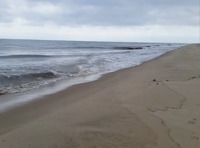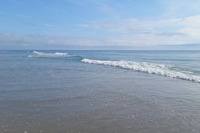Viability of Earth
Viability: the ability to live, grow, and develop
The recent transition from the Holocene into the Anthropocene has created a number of Anthropocene risks that pose severe challenges on all scales from local to global (Key et al., 2019). Many of these risks constitute global catastrophic risks (GCRs; Avin et al., 2018), including climate change, ocean warming and acidification, extinction and resource depletions. The ocean is warming rapidly (e.g., Cheng et al., 2016) experiencing large and rapid changes (e.g., Wang et al., 2018).
Human activities over recent centuries have greatly increased the flows of materials and energy from the ELSS to human communities and back into the ELSS. New flows have been created and fundamentally change the planetary physiology. Modern global change is now threatening the planetary health of the ELSS.
The available evidence shows that there is a massive degradation of the Earth's lide-support system (ELSS) in progress from local to global scales and it is expected that this degradation will accelerated under continuing climate change. Mostly, this degradation is caused by a global human population expanding in numbers, economic activities and land use. The welfare of all life on earth, including humans, depends on a healthy ELSS. Safeguarding the viability of Earth should be, and for a thriving humanity must be, at the center of all our activities.
Scientists repeatedly have issued warnings to humanity indicating that the current trajectory might lead to a global collapse (Union of Concerned Scientists, 1992, Ripple et al., 2017; Chapron et al., 2018). A better understanding is needed concerning the regeneration and safeguarding of a healthy ELSS under modern global change. A fundamental question is what indicators are needed to assess the health of the ELSS? Likewise, what transformations are needed to guarantee the viability of a healthy ELSS?
It is of fundamental importance to better understand the spectrum of possible futures for the planet. Equally important is to monitor the current states and trends of the planetary system and humanity embbed in it, not least to detect early signs of thresholds and tippingpoints that we might be heading towards and to notice early warnings of a pending collapse (e.g., Doncaster et al., 2016).
Earth Viability aims to provide answers to these fundamental questions and to make these answers available to anyone who is concerned about the viability of the ELSS or engaged in actions to regenerate its health. The goal is to provide both, the “Lab Sheet” for “patient Earth”, and the planetary dashboard. The labsheet, which includes a number of planetary health indicator characterizes the syndrome of modern changes and provides a basis for a diagnosis, prognosis and therapy. For each indicator in the labsheet, we show the normal range, the baseline for a healthy planetary life-support system and we show where this indicator is today. As far as possible and appropriate, each indicator is shown from global down to local scales. Our intent is to provide this information in a form that is easily understood and supports the assessment of the health and viability of the ELSS.
The dashboard for the ELSS shows a set of panels that a relevant for determining the recent and future trajectories of “spaceship Earth”. A main motivation for developing the dashboard is the need to have the “red lights” that provide early warnings for any development that could cause a collapse of parts of the system, including human communities.
Indicators are measurable parameters corresponding to part or all of the planetary system including the humansphere. Most of these indicators are based on combinations of variables that can be observed. When evaluated and monitored over time, indicators tell a story about the condition of the system or the parts of the system they relate to.
|
WHAT ELSE CAN YOU GET HERE?
Besides providing the Earth viability lab sheet, we are providing a platform for all those concerned about Earth's viability to interact, access knowledge, get help, and develop transformative actions. This platform is Place4Us. On Place4Us, communities can establish their Virtual Community Center (VCC) and utilize a number of services. There:
- You can Search the extensive knowledge base for information on the ELSS, its syndrome of modern global change in the ELSS, the diagnosis and the root causes of the current degradations, the prognosis, and the options for a theray that could regenerate a healthy ELSS.
- You can Connect with others concerned about the planet's health and viability, and get their help, access their knowledge, expertise, and experiences, learn through experiences with them, and engage with them.
- You can Publish your knowledge about planetary health, your observations of degradations and regenerations, and information on your activities.
- You can access Web workspaces and collaborate with others on projects.
In order to connect, publish and work in the workspace, you will have to register with a valid email address and your name on Place4Us. You may want to join some of the existing VCCs. In particular, the COPE (Confronting the Planetary Emergency) VCC may be of interest to you. After registering, you are able to populate a more detailed personal profile. With in a VCC, you may also be able to open an Expert room where others can connect to you and benefit from your expertise.


Literature
Avin, S., Wintle, B. C., Weitzdörfer, J., hEigeartaigh, S. S. O., Sutherland, W. J., Rees, M. J., 2018. Classifying global catastrophic risks, Futures, 102, 20-26, DOI 10.1016/j.futures.2018.02.001.
Chapron, G., Levrel, H., Meinard, Y., Courchamp, F., 2018. A Final Warning to Planet Earth, Trends in Ecology and Evolution, 33(9), 651-652, DOI 10.1016/j.tree.2017.12.010.
Cheng, L., Trenberth, K. E., Palmer, M. D., Zhu, J., and Abraham, J. P., 2016. Observed and simulated full-depth ocean heat-content changes for 1970–2005, Ocean Sci., 12, 925-935, doi: 10.5194/os-12-925-2016.
Doncaster, C. P., Chavez, V. A., Viguier, C., Wang, R., Zhang, E., Dong, X., Dearing, J. A., Langdon, P. G., Dyke, J. G., 2016. Early warning of critical transitions in biodiversity from compositional disorder. Ecology, DOI: 10.1002/ecy.1558.
Keys, P. W., Galaz, V., Dyer, M., Matthews, N., Folke, C., Nyström, M., Cornell, S. E., 2019. Anthropocene risk, Nature Sustainability, DOI 10.1038/s41893-019-0327-x.
Ripple, W. J., Wolf, C., Newsome, T. M., Galetti, M., Alamgir, M., Crist, E., Mahmoud, M. I., Laurance, W. F., 15,364 scientist signatories from 184 countries, 2017. World Scientists’ Warning to Humanity: A Second Notice, BioScience, 67(12), 1026-1028, DOI: 10.1093/biosci/bix125,
Ripple, W. J., Wolf, C., Newsome, T. M., Barnard, P., Moomaw, W. R., 2019. World Scientists’ Warning of a Climate Emergency, BioScience, DOI: 10.1093/biosci/biz088.
Union of Concerned Scientists, 1992. World Scientists’ Warning to Humanity (pdf.
Wang, M., Hu, C., Barnes, B. B., Mitchum, G., Lapointe, B., Montoya, J. P., 2019. The great Atlantic sargassum belt. Science, 365(6448), 83-87, doi 10.1126/science.aaw7912.
|